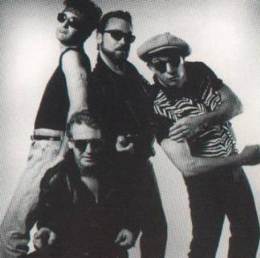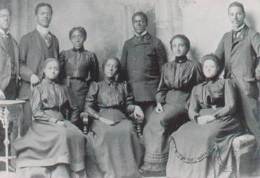當代無伴奏合唱的風格豐富多樣,來自世界各地的組合,按演唱風格分類,大致可分為以下數個流派: (註一)
1. 理髮店派(Barbershop)
理髮店派是歷史最悠久的流派,故先介紹之。它早於十九世紀末便萌芽,至二十世紀初大盛。理髮店是許多非洲裔美國人聚頭的地方,而無伴奏合唱正是在這裡進行的交誼活動之一,故名。
傳統的理髮店歌曲目多由四個聲部構成,分別為男高音(tenor)、主音(lead)、男中音(baritone)和低音(bass)。樂曲的主旋律多出現在主音聲部,其他聲部則唱和音,形成主音織體(homophonic texture)。(註二) 今日的組合會用這形式演唱不同風格的歌曲,而演唱者也不單是非裔美國人了。
最初的理髮店組合幾乎都是全男班,但發展至今也出現了全女班及混聲組合,也有些以合唱團的形式出現 - 即每聲部由多於一人演唱。
理髮店歌曲旋律性頗高,感情豐富,常應用很有特色的七和弦(barbershop seventh chords),以五度循環(circle-of-fifth)形式進行。傳統的歌曲一般不記譜,但近代的組合大多按譜演唱。
活躍在美加的理髮店組合和歌手無數,除演出外,他們也積極組織研討會和比賽,設計教學法,提供系統訓練。
2. 古典派(Classical)
這一派的組合所涉獵的歌曲很廣泛,包括了素歌(plainchants)以至當代的“嚴肅/正統“作品,英皇合唱團(King Singers)和雄雞合唱團(Chanticleer)可算是最具代表性的組合。
古典派歌者多應用“美聲唱法”(Bel Canto),一般會依譜演唱,較少加入即興元素,也很少把節奏“搖擺化”(“swing”)。
不少組合也會兼唱民歌、當代聖詩及爵士樂,但歌者的古典發聲方法及依譜演唱的做法把它們與其他流派區分出來。
3. 當代/流行/搖滾樂派(Comtemporary/Pop/Rock):
這流派的組合於上世紀七十年代興起,九十年代大盛,具代表性者有Nylons, Rockapella, The House Jacks等。它們常被稱作“人聲樂隊”(vocal band),因它們的音色與實物流行或搖滾樂隊頗相似。
一般人聲樂隊由五名成員組成,一人專門唱低音,另一人專責人聲敲擊,其他成員則輪流唱主音及內聲部(inner parts / background)。除了演唱改編歌曲外,許多組合也有原創歌曲。
人聲樂隊一般都用咪高峰演唱,職業團在表演時會安排音控師協助處理音響效果。
4. 嘟哇派(Doo-wop)
原為一九五零到六零年代在紐約或費城等美國城市的街頭藝術。這些組合(如The Alley Cats, The Mighty Echoes 等)所演唱的(老)歌曲均具濃厚的R&B或Rock’n’Roll風格,因大多有明顯的非實義歌詞,如 “doo-wop”等,故名。
許多dop-wop歌者都會應用較強的震音,帶來音準問題,故慣聽古典合唱的聽眾或會不喜歡,但“強震音”卻是doo-wop的特色之一。
5. 學院派(Collegiate) 學院派組合是指那些由耶魯大學威芬普斯(Whiffenpoofs,1909年成立)之傳統發展出來的校園組合。雖然在歐美的大學校園也流行理髮店四重唱及其他風格的無伴奏傳統合唱,但“學院當代無伴奏合唱”一詞(collegiate a cappella)一般不包括它們。
學院派組合多由十至二十人組成,以便在團員退出(如畢業)時,仍能保持運作。每聲部也因此由多於一人演唱,能造出合唱效果 (choral effect)。演出時,各團員一般排成半圓形,但時會走位,甚至加入舞蹈,製造視覺效果。團員中通常有一人是指揮,他們也會一起演唱,與傳統的指揮不同。
雖然許多組合都會演唱不同風格的歌曲,但大部分的學院團主力唱流行曲,因而也常應用人聲敲擊。 許多學院團都會定期出版專輯,水準媲美專業組合。
許多美國的大學也有無伴奏合唱組合,有些甚至有數隊,最具代表性的,當然是上面提及的耶魯大學威芬普斯,它是在美國歷史最悠久、至今仍在運作的團隊。
6. 爵士樂派
提起爵士樂,許多人會想起教人嘆為觀止的即興演奏,但爵士無伴奏合唱組合一般都會依譜演唱,縱使也會加入即興部分。
雖然爵士樂在歐美十分流行,但用純人聲唱爵士樂的組合不算特別多,許多如Manhattan Transfer一類組合嚴格來說不算a cappella團,祇因它們唱的歌曲常牽涉密集和聲(close harmony,即某些a cappella歌曲常會應用的編曲技巧),而它們也會兼唱a cappella,甚至出版過專輯,才引起混淆。
在成立早期,著名組合史溫格歌手(The Swingle Singers)以演唱爵士風格的歌曲為主,但演出或錄音時也會應用樂器。根據創辦人Ward Swingle憶述,他們是在上世紀七十年代開始才轉變為a cappella組合,藉此減省人手及巡迴演出時的交通成本(參閱氏著Swingle Singing, 頁44)。今天,它(已改名為The Swingles)已成為一個演唱多種風格歌曲的組合。
一直專注演唱爵士樂的組合,有活躍於上世紀六十年代末的Singers Unlimited和由成立至今一直貴為天團的瑞典組合The Real Group等。
7. 福音派
福音派組合演唱不同風格的福音性歌曲。(註三) 早期的組合,與理髮店派源出一徹,風格樸素而富感情,不少歌曲以啟應形式(call and response)唱出。近代的組合則具較明顯的流行及搖滾風格,著名的組合有Acappella 及 Glad等。
8. 地方音樂派
顧名思義,這派的組合演唱一些來自非歐美城市地區的樂曲,如東歐的鄉郊音樂、南美音樂、非洲音樂、東正教音樂、猶太音樂等。這些音樂的風格與主流a cappella很不同,甚具特色。較著名的組合,包括Irmelin, Sweet Honey in the Rock, Ladysmith Black Mambazo和Vocal Sampling等。
註一: 本文所應用的a cappella分類法乃參考一般售賣a cappella樂譜及專輯的商店和網店之分類法而成,並非唯一的分類法。此外,許多組合都會跨界,難以限定於單一流派裡。
註二: “男高音”雖然高於“主音”,但它所唱的主要是和音。
註三: 其他流派的組合也會演唱具宗教內容的歌曲,這裡所指的是主要演唱基督教歌曲的組合。
Contemporary a cappella styles encompass a rich and diverse range of genres, with groups from around the world showcasing unique singing styles. Here is a breakdown of these genres (note 1):
1. Barbershop:
Originating in the late 19th century and thriving in the early 20th century, barbershop music emerged as an African American social activity in barbershops. Traditional barbershop songs typically consist of four parts: tenor, lead, baritone, and bass. The main melody is found in the lead part, while the other parts provide harmony, creating a homophonic texture (Note 2). Today, barbershop groups include not only African Americans.
Originally, barbershop groups were predominantly male, but the landscape has since evolved to include all-female groups and mixed vocal groups. There are even choirs where multiple individuals sing each part. Barbershop songs are known for their highly melodic and emotive qualities. They often employ distinctive barbershop seventh chords and are commonly performed in a circle-of-fifths progression.
While traditional barbershop songs were typically not notated, most modern groups now rely on sheet music for their performances.
The barbershop community in the United States and Canada is vibrant and diverse, with numerous groups and singers actively participating. Beyond their performances, these groups also engage in organizing seminars, competitions, and workshops. They are dedicated to developing teaching methods and providing systematic training to aspiring younger singers.
2. Classical:
Classical a cappella covers a wide range of songs, from plain chants to contemporary 'serious/formal' works. Representative groups in this genre include The King's Singers (UK) and Chanticleer (US). Classical singers predominantly use the 'Bel Canto' singing method and sing according to the written score, rarely incorporating improvisational elements or swinging rhythms. While some groups may also sing folk songs, contemporary Christian pop, or jazz, their classical vocal techniques and adherence to sheet music distinguish them from other genres.
3. Contemporary/Pop/Rock:
This genre of vocal ensembles emerged in the 1970s and experienced significant growth in the 1990s. Notable examples include Nylons, Rockapella, The House Jacks, and more. These groups are often referred to as "vocal bands" due to their sound resembling that of actual pop or rock bands.
Typically, a vocal band consists of five members, with one specializing in bass vocals, another in vocal percussion, and the remaining members taking turns as lead vocalists and providing harmonies/background vocals. Alongside performing cover songs, many groups also showcase original compositions.
Vocal bands commonly utilize microphones and other sound equipment for their performances, with professional groups often enlisting the expertise of sound engineers to enhance their shows by operating the equipment.
4. Doo-wop:
Doo-wop originated as a form of street art in American cities like New York and Philadelphia during the 1950s and 1960s. The (old) songs performed by groups such as The Alley Cats and The Mighty Echoes exhibit a prominent R&B or Rock'n'Roll style, often featuring nonsensical syllables like "doo-wop." While some doo-wop singers employ strong vibrato, which can pose intonation challenges, this vibrato serves as one of the defining characteristics of the style. Classical chorus enthusiasts may find it divergent from their accustomed listening preferences.
5. Collegiate:
Collegiate groups are campus groups that have evolved from the tradition of Yale University's Whiffenpoofs, founded in 1909. While barbershop quartets and groups of other musical styles also enjoy popularity on European and American university campuses, the term "collegiate a cappella" generally does not encompass them.
Collegiate groups typically consist of ten to twenty singers, ensuring operational continuity even when members depart due to reasons like graduation. This allows for multiple singers per vocal part, resulting in a chorus effect. During performances, members usually line up in a semicircle, occasionally incorporating movement and dance for visual impact. It is common for one of the group members to assume the role of conductor while still participating as a singer, diverging from the traditional conductor approach.
While collegiate groups cover a variety of musical styles, most of them specialize in pop songs, frequently utilizing vocal percussion.
Many college groups regularly release albums that rival those of professional groups. Numerous American universities have a cappella groups, with some hosting multiple teams. The Yale Whiffenpoofs, mentioned earlier, stand out as the oldest a cappella group in the United States and continue to perform today.
6. Jazz:
While jazz is often associated with breathtaking improvisations, jazz a cappella groups typically adhere to the score while incorporating occasional improvisational elements. Despite the popularity of jazz in Europe and the United States, there are relatively few vocal groups that specialize in pure vocal jazz. Some groups, like Manhattan Transfer, although not strictly a cappella, have sung songs with close harmonies (a feature also found in a cappella music) and have even released albums, leading to some confusion.
In their early days, the renowned group The Swingle Singers primarily performed jazz-style songs but also incorporated musical instruments during live performances or recordings. According to the group's founder, Ward Swingle, they transitioned into an a cappella group in the 1970s to streamline touring costs and logistics (refer to Swingle Singing, page 44). Today, now known as The Swingles, they have diversified their repertoire to include songs in various styles.
Notable groups that have consistently focused on singing jazz include Singers Unlimited, active in the late 1960s, and The Real Group, a popular Swedish ensemble since its inception.
7. Gospel:
Gospel groups encompass a range of styles within the genre of gospel music (Note 3). Early gospel groups were closely connected to barbershop groups, featuring a simple and emotionally charged style. Many songs were performed in the call-and-response format. In contrast, modern gospel groups often incorporate elements of pop and rock, resulting in a more pronounced contemporary sound. Notable groups in the genre include Acappella and Glad.
8. World:
True to their name, this group specializes in performing music from non-European and American urban areas, encompassing genres such as rural music from Eastern Europe, South American music, African music, Orthodox music, Jewish music, and more. The style of these musical traditions is distinct from mainstream a cappella, offering a unique and captivating experience. Notable groups in this genre include Irmelin, Sweet Honey in the Rock, Ladysmith Black Mambazo, and Vocal Sampling.
Note 1: The a cappella classification used in this article is derived from the categorization commonly adopted by stores and online platforms that typically sell a cappella sheet music and albums. However, it is important to note that this classification is not the sole framework, as many groups transcend genre boundaries and can be challenging to confine to a single category.
Note 2: Despite the "tenor" being pitched higher than the "lead," its primary function is to contribute to the harmonies rather than take the lead.
Note 3: While groups from various genres may include songs with religious content, this paragraph focuses specifically on groups that specialize in performing Christian songs.

 The O-Kai Singers from Taiwan is renowned for their expertise in jazz and traditional Taiwanese aboriginal styles. 來自台灣的歐開合唱團,兼擅爵士和台灣原住民風格。
The O-Kai Singers from Taiwan is renowned for their expertise in jazz and traditional Taiwanese aboriginal styles. 來自台灣的歐開合唱團,兼擅爵士和台灣原住民風格。 Vocal Sampling from Cuba captivates audiences with their vocal band format, delivering mesmerizing renditions of South American music. 來自古巴的人聲取樣,以人聲樂隊形式演唱南美音樂。
Vocal Sampling from Cuba captivates audiences with their vocal band format, delivering mesmerizing renditions of South American music. 來自古巴的人聲取樣,以人聲樂隊形式演唱南美音樂。